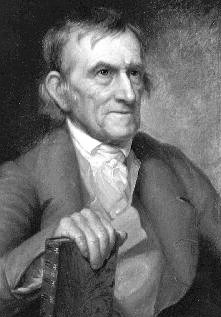A look back at the incredible life of Henry Wynkoop of Richboro.
Henry Wynkoop was a hunted man. British soldiers occupying Trenton in August 1776 were eager to arrest him. Hessian horse soldiers aligned with the Redcoats crossed the Delaware and rode to Wynkoop’s home, a stone mansion on his 450-acre farm near Richboro. On arrival late at night, the Hessians shattered a backdoor lock with such force it woke the household. Wynkoop’s 7 children upstairs climbed out a window onto the roof before retreating downstairs after hearing their mom Susannah screaming uncontrollably in the parlor. The intruders demanded her husband who happened to be in Philadelphia. In the kitchen one soldier foraged food when a servant warned, “You musn’t take that!” A kick sent her sprawling across the floor, screaming. Hearing her, Mrs. Wynkoop fled in terror from the house, fell into an open well and drowned. The soldiers departed.
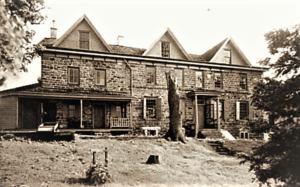
Britain was most anxious to collar Wynkoop known as “the good tall judge” and a key leader in the American Revolution that broke out a month earlier. Details of his life are a tale worth telling. Doing so in 800 words is a challenge. But here goes.
Henry Wynkoop was born in 1737 on his family’s apple farm worked by slaves, not uncommon at the time in Bucks. The acreage produced apple cider and champagne marketed in Philadelphia. Henry was the only son of Ann and Nicholas Wynkoop, members of Richboro’s Low Dutch Reformed Church. At 17, he enrolled in Princeton University but was called home without graduating after the death of his father.
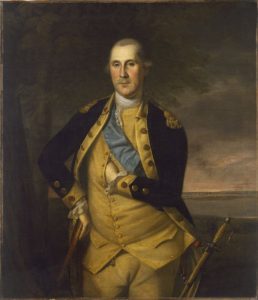
Henry soon married Susannah Wanshaer and was elected to Pennsylvania’s provincial assembly. His physical bearing at 6 feet 4 inches tall always drew attention. “The handsome face, the fine features, the firm chin, and the high forehead, all denote the strong character of the man,” noted biographer John Wurts in 1902. “Add to this intelligence, integrity and profound religious convictions, and we have a complete picture of Henry Wynkoop.”
His political career accelerated with various judicial, militia and wartime committee posts leading up to the American Revolution. In 1775, he raised 75 English pounds (equivalent to $1.2 million today) to sustain Boston citizens during a British blockade of the port. A year later he collected arms sent to Philadelphia to defend against possible British invasion. He also sought support at home but concluded Bucks was evenly divided over a break with England.
During the Christmas holidays of 1776 and 5 months after Susannah Wynkoop’s death, George Washington who was a friend of Wynkoop sent an officer injured in the Battle of Trenton to Henry’s farm to recover. During his stay, future U.S. President James Monroe fell in love with his eldest daughter Christina who chose another man.
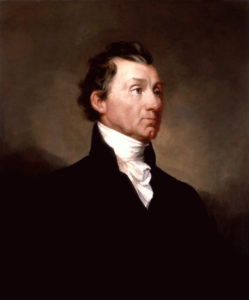
After marrying second wife Maria Cummings in 1777, Wynkoop became Bucks County’s first president judge, served in the Continental Congress and then was elected to the First U.S. Congress. Three issues were up for vote: Where to build the new nation’s capital; resolving state wartime debts, and what title to confer on the presidency. Many suggested “His Highness”. Wynkoop shuddered, calling such titles were “European feathers.” Colleague Frederick Muhlenberg suggested “His Highness” might apply to Washington or Wynkoop since both were well over 6 feet tall. But what about a future short president? In the end, the matter was dropped.
Location of the capital was a different matter. Most in Congress favored somewhere in Pennsylvania. Wynkoop championed Morrisville. Others urged a site on the Susquehanna River – today’s Harrisburg. Amid this debate, the thorny issue of state wartime debts came up. Congressmen from the South refused to support a federal bailout unless there was an agreement to build the capital on the Potomac River. To Wynkoop, a bailout was critical. So he provided a pivotal vote making Washington, D.C. a reality.
After his many years in national politics, Wynkoop remained lifetime associate judge of Bucks County Court after its move from Newtown to Doylestown. Following the death of his second wife in 1780, he married Sarah Newkirk who bore him another child, his 8th. The marriage would last 32 years.
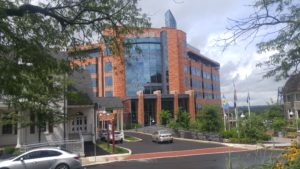
Henry Wyncott freed his 9 slaves at his death on March 25, 1816. That was 36 years after Pennsylvania abolished slavery by freezing the slave population and giving slave holders a grace period to free captives – a process called manumission. Wyncott’s thoughts on the matter are unknown. His freed slaves decided to remain with the family. There is no evidence they ever were mistreated.
Slavery aside, the judge was a disciple of the U.S. Constitution. In an address to Newtown citizens in 1777, he described the union as “the treasure of America” and urged citizens “to shun every measure and suppress every passion that has a tendency to destroy it, as we would the poison of a serpent.”
***
Sources include “Princetonians, 1748-1768: A Biographical Dictionary” by James McLachlan published in 1976; “Henry Wynkoop: Sketch of Soldier-Jurist of Early Days” by John S. Wurts read on Oct. 7, 1902 before a meeting of the Bucks County Historical Society in Wycombe, and “To Adorn Excellence with Joyousness: The Life and Times of Judge Henry Wynkoop, Northampton Township’s Founding Father” by Roe DeLuca Blumenthal, Northampton Township Historical Society.

